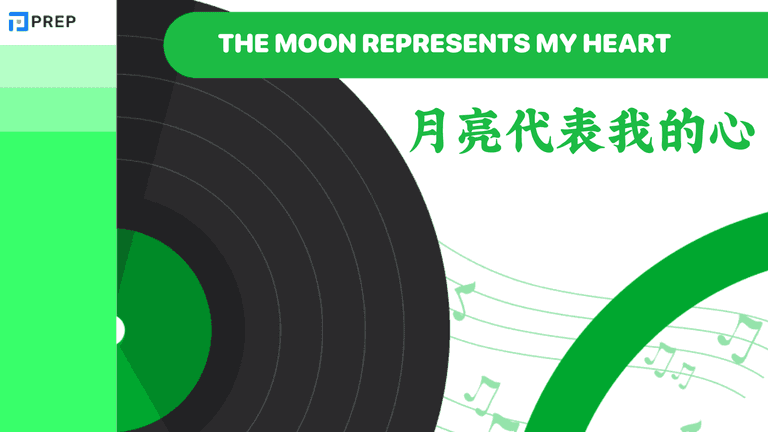How to Say On in Chinese - Unlocking the 5 Meanings
Your Chinese textbook lied to you. There's no single word for "on" in Chinese, and that's actually the key to understanding how Mandarin really works. So how to say on in chinese?
Most English speakers hunt for direct translations, expecting a simple answer. Instead, they discover something that initially frustrates but ultimately liberates them: Chinese don't think in universal prepositions. It thinks in relationships and contexts.
The English word "on" actually maps to five completely different Chinese expressions: physical location uses directional structures, electronic devices require action verbs, time expressions eliminate prepositions entirely, topics demand relationship markers, and transportation offers multiple approaches.
I. Unlocking the 5 Meanings of 'On' in Chinese
How to say on in chinese? This common question puzzles many English speakers, but the answer reveals something fascinating about how to say it in Chinese effectively.
Mandarin operates as a context-driven language where direct word-for-word translations often miss the mark entirely. When you want to express "on" in Chinese, you must first understand the specific relationship or situation you're describing. The English preposition "on" actually corresponds to five distinct contexts in Chinese, each requiring different grammatical structures and vocabulary choices.
This comprehensive guide explores the five essential contexts you need to master: physical location using directional complements, device states with action verbs, time expressions that eliminate prepositions entirely, topics requiring specific relationship markers, and transportation scenarios offering multiple approaches.
II. Why There's No Single Word for "On" + Quick Reference Guide
Understanding how to say on in Chinese begins with recognizing that the function of "on" in your English sentence determines the correct Chinese equivalent. Chinese grammar organizes spatial, temporal, and conceptual relationships differently than English, making context analysis essential for accurate translation.
Quick Translation Chart for "On" in Chinese
|
English Context |
Chinese Phrase |
Pinyin |
Simple Example |
|
Physical Location |
在...上 |
zài... shàng |
书在桌子上 (The book is on the table) |
|
Device States |
开 |
kāi |
灯开着 (The light is on) |
|
Time/Dates |
(no preposition) |
- |
星期一我工作 (On Monday I work) |
|
Topics/Subjects |
关于 |
guānyú |
关于历史的书 (A book on history) |
|
Transportation |
坐 or 在...上 |
zuò or zài... shàng |
坐公交车 (On the bus - riding) |
This reference table provides immediate solutions for the question of how to say on in chinese. Each context follows specific grammatical rules that reflect how Chinese speakers naturally organize and express these relationships.
III. How to Say On in Chinese - Complete Breakdown of 5 Main Ways
Now that you have the quick answers for the question of how to say on in chinese, let's examine each context with detailed grammar rules and practical examples so you can apply them confidently and correctly in real conversations.
1. Physical Location - Using the 在...上 (zài... shàng) Structure
Physical location represents the most fundamental way to say on in Chinese, utilizing the essential formula:
Subject + 在 (zài) + Place + 上 (shàng)
This structure creates precise spatial relationships that native speakers use instinctively throughout daily conversations.
The grammar rule operates systematically where 在 (zài) functions as the locational verb indicating "to be at" or "to be located," while 上 (shàng) serves as a directional complement specifying the "on top of" relationship. Consider these clear examples that demonstrate proper usage: "猫在椅子上" (The cat is on the chair), "我的手机在床上" (My phone is on the bed), and "杯子在桌子上" (The cup is on the table).
Understanding the Critical Role of 在 (zài)
Many beginners mistakenly attempt using only 上 (shàng) when describing location, but this creates incomplete or incorrect sentences. The locational verb 在 (zài) anchors the entire structure, establishing the subject's position before the directional complement 上 (shàng) specifies the precise spatial relationship. Without 在 (zài), Chinese speakers cannot properly process the locational information you're trying to convey.
2. Device States - Using 开 (kāi) for "Turn On"
When describing electronic devices or systems in an active state, Chinese uses the action verb 开 (kāi), meaning "to open" or "to activate," rather than any preposition-based construction. This approach reflects how Chinese conceptualizes device states as actions rather than static conditions.
The verb 开 (kāi) pairs naturally with its opposite 关 (guān), meaning "to close" or "to turn off," creating a complementary system for describing all device states. Understanding both verbs simultaneously prevents confusion and demonstrates linguistic sophistication that native speakers appreciate.
Common examples of how to say on in chinese in this case include:
-
"电视开着" (The TV is on)
-
"请把电脑开一下" (Please turn on the computer)
-
"空调开了吗?" (Is the air conditioning on?)
These sentences show how 开 (kāi) integrates seamlessly into various grammatical patterns while maintaining consistent meaning across different contexts.
3. Time and Dates - The "No Preposition" Rule
Time expressions in Chinese eliminate prepositions entirely, representing one of the most significant departures from English structure when learning how to say on in Chinese for temporal contexts. Chinese treats time words as adverbial modifiers that appear directly before the main verb without requiring connecting prepositions.
The sentence structure follows this pattern:
Subject + Time Phrase + Verb + Object
This arrangement places temporal information in the natural Chinese word order while avoiding the preposition-heavy constructions that English speakers expect.
Examples demonstrate this principle clearly:
-
"星期一我上班" (On Monday I go to work)
-
"六月一日是儿童节" (June 1st is Children's Day)
-
"星期天我们去公园" (On Sunday we go to the park)
Each sentence positions the time phrase immediately before the main action, creating smooth, natural Chinese that native speakers use constantly.
4. Topics and Subjects - Using 关于 (guānyú) for "Regarding"
When "on" indicates "about" or "concerning" a particular topic, Chinese employs the preposition 关于 (guānyú), which specifically handles relationships between subjects and the topics they address. This usage appears frequently in academic, professional, and casual discussions about various subjects.
关于 (guānyú) + Topic + 的 (de) + Noun
This structure creates precise topical relationships that English expresses with "on," "about," or "concerning." This pattern works consistently across different types of content and discussions.
Practical examples of how to say on in chinese in this case include
-
"关于中国历史的书" (a book on Chinese history)
-
"关于这个问题的报告" (a report on this issue)
-
"关于环境保护的讨论" (a discussion on environmental protection)
These phrases show how 关于 (guānyú) creates clear connections between content and its subject matter.
5. Transportation - Choosing Between Action (坐) vs. Location (在...上)
Transportation contexts offer two valid approaches for the 2 ways of how to say on in chinese, each emphasizing different aspects of the travel experience. Understanding both methods allows you to choose the most appropriate expression based on your specific communicative intent.
Method 1: Action Focus with 坐 (zuò)
The verb 坐 (zuò), meaning "to sit" or "to ride," emphasizes the action of traveling by a particular vehicle. This method focuses on the transportation process itself rather than your physical location at any given moment.
Examples include:
-
"我坐公交车上班" (I take the bus to work)
-
"他坐火车去北京" (He takes the train to Beijing)
-
"我们坐飞机旅行" (We travel by airplane)
These sentences highlight the action of using transportation methods to reach destinations.
Method 2: Location Emphasis with 在...上 (zài...shàng)
The familiar 在...上 structure from Context 1 can also describe your current physical location within a vehicle. This method emphasizes where you are right now rather than the action of traveling.
Comparative examples illustrate the difference: "我坐公交车" (I'm taking the bus - action) versus "我在公交车上" (I'm on the bus right now - current location).
Both expressions are correct, but they convey subtly different information about your relationship to the transportation.
With these five contexts mastered, you're ready for most situations. Now, let's refine your understanding by tackling some advanced questions that separate proficient speakers from beginners.
IV. Frequently Asked Questions about How to Say On in Chinese
1. Is it ever correct to use 上 (shàng) without 在 (zài) for location?
Yes, but only in specific verb-complement constructions where 上 (shàng) combines directly with action verbs. Examples like "上车" (get on the vehicle) and "上床" (get on the bed) use 上 (shàng) as a directional complement indicating movement toward a surface, which differs completely from static location descriptions that require 在 (zài).
2. Which other English prepositions like "in" and "at" does 在 (zài) also cover?
The versatile locational verb 在 (zài) handles multiple English prepositions beyond "on," including "in," "at," and "by" depending on context. Examples include "在家" (at home), "在学校" (at school), "在中国" (in China), and "在银行" (at the bank).
3. What is the difference between saying 我坐公共汽车 and 我在公共汽车上?
The first phrase "我坐公共汽车" emphasizes the action of riding the bus as your method of transportation, while "我在公共汽车上" focuses on your current physical location being inside the bus. Both express valid information, but "坐" highlights travel action while "在...上" emphasizes present location within the vehicle.
4. What is a "location complement" and how does 上 (shàng) function as one?
A location complement specifies the spatial relationship or direction of an action's result. The word 上 (shàng) functions as a location complement when it follows verbs to indicate upward movement or surface contact, as in "放上" (put on top) or "贴上" (stick on). This grammatical concept helps explain why 上 (shàng) appears in various constructions beyond basic location descriptions.
V. Conclusion
The key insight transforms your entire approach for the question of how to say on in chinese: stop translating individual words and start analyzing the relationships you want to express. When you encounter "on" in English, ask yourself whether you're describing physical location, device states, time relationships, topical connections, or transportation situations. This analytical process guides you naturally toward the correct Chinese expression.
Your journey to fluent Chinese communication accelerates when you adopt this context-first mindset for all language elements. Every grammatical challenge becomes an opportunity to understand how Chinese speakers organize their thoughts, bringing you closer to genuine linguistic competence.

Hi I'm Chloe, and I am currently serving as an Product Content Administrator at Prep Education. With over five years of experience in independent online IELTS study and exam preparation, I am confident in my ability to support learners in achieving their highest possible scores.
Comment
Premium content
View allPersonalized roadmap
Most read












